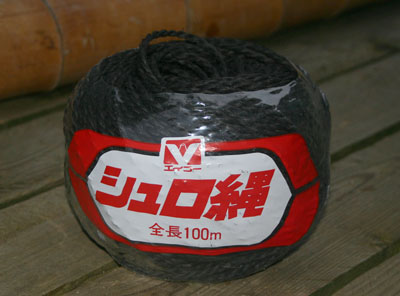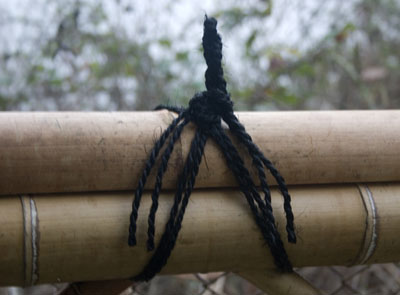
All that remained was to tie the top and bottom mouldings using the traditional Japanese dyed black palm fibre twine (shuro-nawa) - which is both functional in binding the bamboo together tightly and also decorative.
The twine is used doubled and is available in balls of paired lengths (see photo). It is first soaked in lukewarm water and tied while wet - which not only makes it more flexible but also means that it tightens as it dries. But of course the black dye gets everywhere so wear old clothes!

A decorative knot (kazari-musubi) was placed on the tamabuchi at each point where a pair of kumiko were fixed (see left).
Since my kumiko were whole pieces rather than a pair of split canes, I did not need to tie the intersections.
next